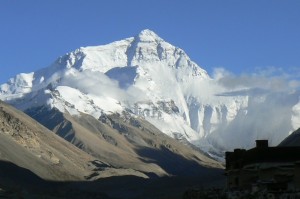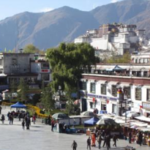Looking for a LGBT community in Tibet is futile. Of the handful of modern reports about gay life in Tibet, since 1999, only one writer claims to have encountered more than one or two gay individuals, usually by chance. Jump ahead to my own visit in 2013 when I did not find any gay person to interview for an account about LGBT life–but the story does not end there.
Richard Ammon
GlobalGayz.com
September 2013
Also see Gay Tibet News & Reports
Also see Tibet Photo Galleries
A few nights ago I watched the 2007 film ‘Seven Years in Tibet‘ based on the true life story of the Dalai Lama and his early-life tutor Heinrich Harrer, an ex-Nazi Austrian. It is a poignant story of an intimate friendship that was interrupted by the Chinese invasion of Tibet but continued after the Dalai Lama escaped to India in 1959. That invasion brought about deaths of more than a million people and suddenly ripped Tibet from its ancient heritage. (photo right: Mount Everest by Richard Ammon)
Skip ahead 60+ years. The communists are still present and their imprint is everywhere. My partner and I had no direct contact with the Chinese authorities during our recent two-week visit. As long as we followed their regulations we saw no uniformed police or soldiers other than the occasional stiff-backed guards standing at attention outside government buildings and sole policemen manning the ubiquitous police stations near every important monastery.
During our time in Tibet we walked around central Lhasa, the capital city, (without our requisite guide) and visited exotic temples (with our guide) such as the Jokhang Temple, the Potala Palace and the Summer Palace surrounded by a sylvan park (whose entry was spoiled by an obnoxiously large bright digital video screen repeatedly showing China’s president smiling among his people and patriotic music blaring from speakers). We also visited the Pabongka Monastery where monks live and pray and where deceased corpses are cut up, laid out, and left to be picked to bare bones by vultures (called sky burials).
With our sweet female guide and a butch driver in a 4WD Toyota SUV we went on a 1600 mile 5-day driving tour of famous sites far outside Lhasa following the usual tourist route since an outsider can’t roam around the country at will. The major highlight of that trip was seeing Mount Everest ‘up close’ from the Tibet Base Camp about ten miles from the actual rugged base of the mountain. The view, needless to say, was very white and very sublime. (photo above)
Easy as these sights were to find, looking for a LGBT community in Tibet is futile. Of the few modern reports about gay life there, 1999-2013, four writers found no more than a scattered, serendipitous handful of gay folks to interview. Jump ahead to 2013 to my own visit. Times have changed for better and for worse as the Chinese continue to impose their government and policing on the Tibetan land. I did not locate any open or slightly open LGBT folks there. I didn’t know where to go or whom to ask despite several inquiries and trying out Gayromeo.com and Grindr, which didn’t work for me there.
I did know that homosexuality was an alien concept to most Tibetans and a forbidden topic to the rest even though it’s not a criminal offense. (However, suspected gays can be detained and harassed for other reasons including ‘hooliganism’.) Each year countless LGBT tourists fly (or train) in and out of Tibet and virtually never see a single sign of gay life. Writers with a goal to meet LGBT Tibetans usually have to dig deep to find ‘us’ there. Occasionally they succeed to a limited degree.
An Internet search turned up a few links to ‘gay Tibet’ (see list at the end of this story). Presented here are the four most informative commentaries, two by lesbians and two by gay men, mixed in with my own observations and comments.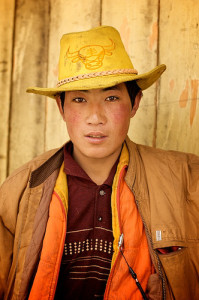
Note: the images in this story have been randomly selected from the Internet with no implication of the sexual orientation of anyone.)
Adventures of Durian Gray (1997)
A few years ago, in the late 90s, gay writer Dorian Gray (a pen name) wrote about his adventures in Tibet, sexual and otherwise. (http://www.freewebs.com/gaytibet/seven/seveninchesint01.htm) After making the long and arduous road trip from Nepal to Lhasa, he was underwhelmed by the Chinese influence and their bland and anonymous condo buildings. He soon made his way to the more traditional old town, the Tibetan quarter as it’s called, that’s centered around Barkhor Square and the famous Jokhang Temple and it resident hundreds of monks. (Jokhang is infamous as the site of massive killings of monks by the communists and where numerous monks have immolated themselves in protest of the occupation.) But Gray’s focus was elsewhere during his visit.
With the help of a native acquaintance he was guided to the Top End disco , a mixed dance and drink venue, not particularly gay, that existed at the time (now long gone). Using the universal language of ‘gaydar’ he encountered “one well-built Tibetan student on holiday from the University of Beijing”. After some slight conversation about education and travel the hunky student announced he was interested in a ‘close-up’ with a foreigner. Since there were hardly any other outsiders at the disco the writer happily obliged and they became an item for the night.
During his time there Gray had other encounters with willing native guys whom he met in public places such as at the outdoor billiard tables in Barkhor Square, a popular pastime for most young men. “The blaring videotheque cafés are also good for cuddling and pick-ups. One guy came back with me to my room from one of these video joints and another followed me upstairs to the toilet for some hanky-panky.”
Further on, Gray wrote, “gay readers of Heinrich Harrer’s ‘Seven Years in Tibet’ book must have been heartened by the author’s disclosure that in Tibet homosexuality is very common.” The book was published in 1953 based on Harrer’s experiences in the mid 1940s. The communists began their invasion of Tibet in 1950 and the occupation continues to the present day; the Dalai Lama escaped over the Indian border on March 31, 1959. Harrer’s observations were made 50 years before Gray arrived in the Himalayas (1997) so any mention of homosexuality in Tibet in the 40s was inevitably different from Gray’s expereince; Harrer didn’t say what he encountered that evoked his words.)
Obviously, Gray had a carnal agenda in mind for Tibet in addition to seeing the famous sites. Despite his tricks and quickies gathered from the discotheque and Barkhor Square he did not find a LGBT ‘community’; a small handful of separate horny studs hardly qualifies as a fellowship of like-minded queers. Indeed, it doesn’t sound as he were looking for one or suspected one might exist in Lhasa. His view of ‘gay Lhasa’ was defined by accidental incidents disconnected from any other LGBT context. Viewed in light of today’s heightened social consciousness, Gray’s erotic romp might seem rather self indulgent. But that was sixteen years ago and was just one person’s perspective.
In addition to the Gray story, there were three other online stories, ranging from 1997 to 2013.
Garry Otton Reveals Private Life (1997)
Another story from the late 90s was written by Garry Otton, a human rights activist from Scotland who ventured into the mysteries and hidden places of gay Tibet with his story on Freewebs (http://www.freewebs.com/gaytibet/forbidden/forbidden01.htm). He too managed somehow (he didn’t say how) to find some gay Tibetans. Rich with human interest vignettes of scary communist soldiers, Buddhist monks and secular gay characters Otton delves into the behavior of Tibetans–or rather tries to delve through the uncertainties and vagueries of intimate male life, through the fog of hiding, missed connections, alcohol and sexual shyness. He does elicit some personal comments about private activity from a couple of Tibetan natives.
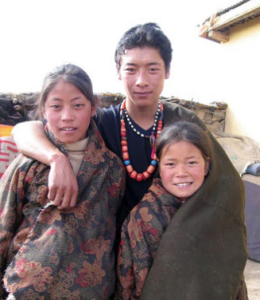 Of course there is nothing new about the ‘act’ but Otton was more interested the manner of meeting socially and what activities were involved. He wrote, “I wanted to know how Tsering and Buchung (two local gay Tibetans acquaintances) met guys: ‘We go out to bars and discos looking for Smart Guys,’ said Buchung. Smart Guys? ‘Guys dressed to impress… going out to pick up…looking for sex: Smart Guys.’ With the Tibetan beer kicking in, I asked Tsering if Smart Guys liked to top him? They did. And without condoms? Yes, but usually ejaculating between his legs. Both he and Buchung had occasional run-ins with the Tibet Public Security Bureau whose job includes policing morality and maintaining good social order. Tsering admitted to having been arrested on a number of occasions. ‘I am not afraid,’ he said. ‘They just let me go.'” (Otton also included a reference to arrested gays in China being subject to electro-shock treatment and hard-labor re-education.)
Of course there is nothing new about the ‘act’ but Otton was more interested the manner of meeting socially and what activities were involved. He wrote, “I wanted to know how Tsering and Buchung (two local gay Tibetans acquaintances) met guys: ‘We go out to bars and discos looking for Smart Guys,’ said Buchung. Smart Guys? ‘Guys dressed to impress… going out to pick up…looking for sex: Smart Guys.’ With the Tibetan beer kicking in, I asked Tsering if Smart Guys liked to top him? They did. And without condoms? Yes, but usually ejaculating between his legs. Both he and Buchung had occasional run-ins with the Tibet Public Security Bureau whose job includes policing morality and maintaining good social order. Tsering admitted to having been arrested on a number of occasions. ‘I am not afraid,’ he said. ‘They just let me go.'” (Otton also included a reference to arrested gays in China being subject to electro-shock treatment and hard-labor re-education.)
Further on, Otton wrote, “I couldn’t help noticing how the Tibetans quickly cover themselves when bathing near strangers. I know for a fact they harbour no such prudery amongst themselves. At the side of the road I caught sight of a group of Tibetan men swimming in a lake. Not only were they completely naked, one man lay on top of another in full view of any passing trucks.”
Finally, in his story Otton wrote, “On the way, I met a group of young, celibate monks who, through a translator, talked to me about life in a monastery. After some initial shyness, they admitted that some monks got sex ‘between the legs.’ But not any of them, of course! This particular practice conveniently circumvents actual penetration, which monks see as a clear contravention of their vows. I later sought advice from an older celibate monk: ‘No, there is nothing wrong with gay sex, not for lay monks. Celibacy is a personal choice,’ he told me. ‘It is not sex, but the attachment to it that celibate monks seek to overcome. For monks that don’t achieve it, well that is a naughty monk!'”
Similar to Dorian Gray, encountering a gay social scene was also futile for Otton–although he somehow met two seemingly gay Tibetans (were they gay or straight rambunctious money-boys?). What he heard was somewhat interesting gossip but Otton found no sign of other gays and nothing about gay life as a lifestyle. Despite the emergence of public LGBT venues and rights activism in progressive far-away Shanghai, Tibet by comparison is decades behind that kind of moderate out-and-proud presence. The repressive regime in Beijing is paranoid and apprehensive about any disruption or expression of difference in Tibet–and for good reason: most Tibetans hate China. To stifle any dissent China has sentries posted on rooftops in major cities and has police sub-stations in front of all important monasteries, in addition to countless visible street surveillance cameras on 24/7.
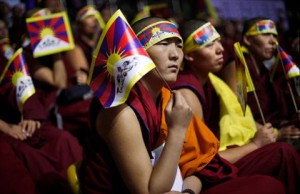 As unending proof of that anger, recently in November 2013 a Tibetan monk attempted to immolate himself in a Chinese city near Tibet, in protest against the occupying Han Chinese. (http://www.voanews.com/content/buddhist-monk-self-immolates-in-tibet-protest/1788176.html). “Chinese officials quickly arrived at the scene with fire extinguishers to put the fire out and took the monk, Tsering Gyal, to a hospital. It is not clear what his condition is.”
As unending proof of that anger, recently in November 2013 a Tibetan monk attempted to immolate himself in a Chinese city near Tibet, in protest against the occupying Han Chinese. (http://www.voanews.com/content/buddhist-monk-self-immolates-in-tibet-protest/1788176.html). “Chinese officials quickly arrived at the scene with fire extinguishers to put the fire out and took the monk, Tsering Gyal, to a hospital. It is not clear what his condition is.”
The incident happened near Xining the capital of Qinghai province and the largest city on the Qinghai-Tibet Plateau (average elevation exceeding 4,500 meters (14,800 ft). By coincidence, I had passed through Xining on the train from Lhasa to Beijing shortly before that incident. My slight proximity to such a horrific act of defiance gives me pause to reflect on the intensity of animosity that monk Tsering Gyal–only 20 years of age–had toward the communist occupiers. “More than 120 Tibetans have self-immolated since 2009 to protest what they say is Chinese repression of their culture. China denies the charges and says the suicide protests are acts of terrorism,” reported VOA News. (Also see this report.)
Beyond two guys looking for some nighttime action Otton discovered nothing from them about their families, intimate relationships, self-awareness of their sexuality, encounters with homophobia; nothing about knowing other gays or the social pressure they faced to conform to heterosexual traditions. Otton has nothing to say about these issues, not because such thoughts don’t exist but as an outsider he was not offered an entree into the private subjective realm of being a gay Tibetan man.
Dinah Gardner Reports for Fridae.com (2007)
Almost ten years after the Gray and Otton pieces, another report came from Dinah Gardner’s 2007 article on Fridae.com (http://www.fridae.asia/newsfeatures/2007/04/06/1821.gay-in-lhasa + comments) entitled ‘Gay in Lhasa’. Surprisingly she did find gay Tibetans to interview–Tenzin, Jampa, Yeshe, Dawa and a lesbian named Lhundrop. However, three of the guys lived outside Tibet at the time of her writing. She mentions the then popular BlueSky gay bar (now defunct) and goes on to quote one gay guy, “as for gays in Lhasa, I think the way they meet each other is mostly through cruising (places mentioned by Dorian Gray?). There are certain public parks and toilets where they tend to go and meet. It seems like there is an underground gay scene in Lhasa, but the community is not vibrant and open and nor is there a support group.”
According to 30-year-old lesbian Lhundrop , who apparently lived in Lhasa, there are no dyke bars, and girls will rarely go to Blue Sky bar. “We meet each other through friends, or normal bars, or through the Internet. Some people–the younger generation–accept homosexuality, but most Tibetans cannot accept it. I have never told my parents. They are really traditional. They don’t have any experience of this, but I think if I told them they wouldn’t reject me.”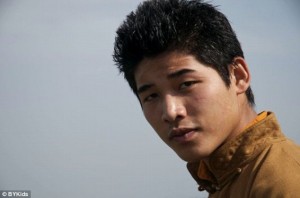
The gay community is unavoidably mixed among Chinese and Tibetans, which raises another issue: the relationship between locals and Han Chinese immigrants is tense. Gardner writes, “many Tibetans resent their presence in their city. This sour relationship is clear at the table. Yeshe says that all the money boys at the Blue Sky bar are Chinese, while Lhundrop says she’s dated Chinese girls but much prefers Tibetans.’I’ll never settle down with a Chinese girl,’ she says. But, Dawa, a flamboyant 25-year-old Tibetan gay man, dressed in a white leather suit jacket and union jack loafers, says he loves his Chinese boyfriend.”
One of the main problems, adds Tenzin, a gay Tibetan from India, who runs gaytibet.blogspot.com, a blog with resources for gays and lesbians (last post was in 2009), is that “‘there is so little visibility for gay Tibetans. Among the Tibetan communities both inside and outside Tibet, there is zero visibility of homosexuals although we do exist.’ On 9 December, (2006) two members of the Tibetan gay community, Tenzin and Jampa, both Tibetan expats living in the US went on air in a Tibetan webcasting forum (in Lhasa or abroad?) and spoke openly about their lives as gays. This was the first time any Tibetan came out publicly,” wrote Gardner.
The writer was fortunate to find five LGBT Tibetans to talk with about their lives. Of the four stories posted here she met more gay Tibetans than any other author. Perhaps because she went to Lhasa before the 2008 uprising against China that resulted in carnage and bloodshed. After that terrible event China cracked down and to this day (September 2013) there are tight controls on public expression, including socializing with foreigners, which are virtually invisible to the casual tourist.
A sample of that control was revealed by our pretty guide who told how the Chinese-Tibet government forced her family to move out of their old home apartment near central Lhasa into a new one (given free in exchange, on the sixth floor, with no elevator) an hour outside Lhasa. Her family had no voice in the matter.
Two American Lesbians in Tibet (2013)
As it happened, earlier this year (2013) two lesbian travel journalists from San Francisco went to Tibet and through a circuitous process (without relying on any previous writers) managed to locate one gay Tibetan guy who was willing to talk about LGBT life in Tibet. (http://www.gaystarnews.com/article/undercover-life-proud-gay-man-tibet310313)
Their observation was of a Buddhist country obviously over-lorded by China, although without tanks, guns and soldiers (at least in plain sight), for more than 50 years; still under the boot of Beijing.
That said, the Chinese have installed new roads, a national electric grid, many tunnels and bridges, an airport, countless modern and anonymous condo towers and hospitals.
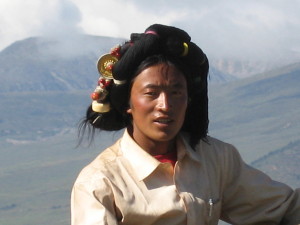 As in the reports from the other writers the gay community remains unseen; no community, no organization, no flags and no visibility despite China’s recent loosening of LGBT controls in the larger cities in mainland China. Beijing and Shanghai have approved organizations and venues where LGBT citizens gather and plan events such as Mr Gay China and a LGBT film festival–unless the local authorities find a flimsy reason, or no reason, to shut them down or interfere as they did in recent years.
As in the reports from the other writers the gay community remains unseen; no community, no organization, no flags and no visibility despite China’s recent loosening of LGBT controls in the larger cities in mainland China. Beijing and Shanghai have approved organizations and venues where LGBT citizens gather and plan events such as Mr Gay China and a LGBT film festival–unless the local authorities find a flimsy reason, or no reason, to shut them down or interfere as they did in recent years.
In Lhasa there is no such worry because no one in their right mind would attempt such a ‘threatening’ event that would bring immediate censure and very likely arrest. Beijing is very nervous about Tibet even after five decades of occupation. There have been nine self-immolations–mostly monks–during and after the 2008 uprising, the most recent was in November 2013, mentioned above, protesting against China’s presence; each drastic incident has brought world attention to China’s harsh and offensive position.
The gay bars mentioned in previous stories are gone. The cruising places may still be there but it’s not likely they are the same as in Gray’s and Otton’s comments since the police find out about them and increase their patrols and detentions. But it is likely there are new locations, which I did not find.
So the two lesbian journalists turned to the gay Tibetan whom they found through an obscure ad online after an exhaustive search that lasted several months. “Jetsan (a pseudonym) was a shy, sweet and trusting guy whose heart and curiosity about the world was bigger than the hard times the Tibetans are facing. He’d just come from work, and was dressed smartly in a suit and tie, his hair curling a bit over his ears. His forehead, slightly lined in his early 30s, furrowed as he told us that since he is not a tour guide, people might wonder why he was talking to us (any interaction between western foreigners and local Tibetans outside the ‘tourist’ realm could potentially be seen as a ‘separatist’ act on his part by authorities). He visibly relaxed the longer he spoke with us.” (Several times I ate dinner–without my guide–at the popular Snowlands restaurant by Barkhor Square; It was always full of mostly young people, foreign and local, chatting noisily in person or by texting on their devices. It would have been safe here for anyone to meet and talk.)
With that initial contact to establish trust and familiarity, Katie Cook and Maggie Young began their exploration of one man’s experience of being different in modern Tibet, an exploration of a sensitive mind and a kind heart whose authenticity was defined in part by his sexuality. Out of the women’s probing and Jetsan’s unusually candid openness a touching story unfolded that reveals the inner and outer world of a country politically and sexuality-separate from the rest of the world. Their story reveals as well the inner and outer world of one man caught in a matrix of repressive politics, sexual and emotional desire, a homophobic culture and the ambivalence of a religious tradition.
“Jetsan told us that in Tibet, there are no LGBT organizations. Although he knows people who are out, no one he knows lives a ‘gay life’ there, and Jetsan doesn’t see it as ever being possible.
When he came out to his mother, “she reminded him that he came from a traditional Tibetan family and culture, where this kind of thing doesn’t happen. She blamed herself for his homosexuality, saying: ‘I should have known this would happen when you used to dress up in my clothes and my make-up as a little kid!’ Since then, she has refused to acknowledge that they had the conversation at all.”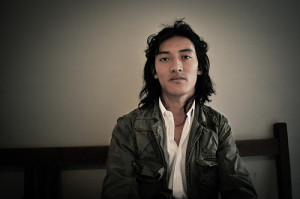
The authors continued, “one day, in his earlier years a friend took him to a popular cruising spot where they sat for an hour watching gay men by the dozens cruise each other. Jetsan was in heaven as he realized he was far from alone. ‘It was a good day!’, he told us smiling. ‘A very happy day!’”
Since those early days of self-discovery Jetsan has dated a few men and described having had two serious relationships, both with Chinese men in Tibet–to the surprise of the visitors who had been told on more than one occasion how much dislike there is between the two countries. “He told us, somewhat surprisingly, that there seems to be more Tibetan-Chinese gay mixing than for heterosexual couples.” He continued to say, sadly, that ‘many gay men are pressured into getting married and having children, with many husbands continuing their relationships with men on the side.’ Jetsan further mentioned there have been ‘cases of women blackmailing their husbands if and when he tries to divorce her, threatening to tell his family about his sexual orientation.'”
Regarding relationships in Tibet, “for most of the gay men whom Jetsan knows it is difficult to stay in monogamous relationships with another man. When we asked why, he replied that it was probably a combination of social pressure of old traditions, as inability to exist as an ‘out’ couple (the majority of unmarried people live with their parents until marriage–and often after that), as well as competition with other gay men.”
Monogamy among Tibetan gay men is mostly unheard of since there are no role models and no gay traditions in a society that offers no acknowledgment of such relationships. Being gay means having sex not making love, unless like Jetsan, one experienced a more developed LGBT community in a major city such as Shanghai (population 24 million) where long-term live-in couples are not unusual.
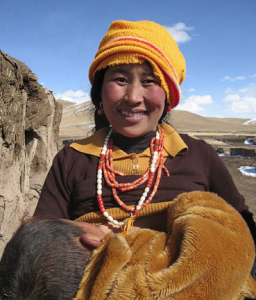 As an aside, Tibet culture has a widespread tradition of polyandry (one wife with more than one husband) all living under the same large roof. There may be two to several husbands; often they are brothers. These marriages are mostly found in rural areas which are less influenced by the communist disdain for polyandry. “Concern over the delicate question of which children are fathered by which brother falls on the wife alone. She may or may not say who the father is because she does not wish to create conflict in the family; she may also be unsure who the biological father is.” (http://en.wikipedia.org/wiki/Polyandry_in_Tibet). The basis for polyandry centers around keeping land ownership within one family.
As an aside, Tibet culture has a widespread tradition of polyandry (one wife with more than one husband) all living under the same large roof. There may be two to several husbands; often they are brothers. These marriages are mostly found in rural areas which are less influenced by the communist disdain for polyandry. “Concern over the delicate question of which children are fathered by which brother falls on the wife alone. She may or may not say who the father is because she does not wish to create conflict in the family; she may also be unsure who the biological father is.” (http://en.wikipedia.org/wiki/Polyandry_in_Tibet). The basis for polyandry centers around keeping land ownership within one family.
The fertility and variety of such a heterosexual poly-spouse lifestyle could produce a gay offspring whose life would be complicated beyond common understanding. It would be overwhelmingly impossible for a gay son or daughter to introduce their lover to such a herd of family with any hope of understanding or acceptance. To survive emotionally a LGB person would certainly be forced to move away, most likely to Lhasa or Shigatse, the second largest city in Tibet. But even there any primary relationship would have to be in secret. Some gay Tibetans in an effort to escape the suffocating enclosure of family ties (or chains) might feel urged, probably unwillingly, to move to China, India or emigrate to the West.
The emotional bonds of family are not easy broken. Jetsan told Maggie and Katie, “he thinks sometimes about moving back to mainland China, where he could live more openly as a gay man. But he feels it would be an insult to leave his family who love him and who have been so supportive of him in exchange for the unknown ‘chance’ of a relationship elsewhere. He is so close to them that he simply cannot leave them, and so–at least for now–he’s decided to stay: ‘I have to be a good son,’ he told us sadly. ‘I have to keep my family together.'”
In a city as big as Lhasa, with close to 600,000 citizens, Chinese and Tibetan quarters combined, there are secretive bars and discos that open and are known to be gay friendly. However, the popularity of such places among gay people creates a fear they might be recognized, so many stay away. As well, if straight people realize a place is popular with gays this could turn them off and without popular patronage such places are eventually forced to close. But times change even in traditional Tibet. Young urban people are now more aware of sexual varieties and often don’t mind mixing socially with gay people.
“As security has increased throughout the city in recent years, there have been fewer chances and places to safely cruise, so people are increasingly finding one another on the Internet,” noted Maggie and Katie who also were told there was “another app similar to Grindr which is popular in China and Tibet”. Times change.
Lesbian Life in Tibet
As for lesbians in Tibet–not surprising in a doubly-repressed society, for women and more so for lesbians–there is probably an invisible scene that can only be found by secretive word-of-mouth among ‘comrades’ (‘tongzhi’ in Chinese). Part of the repression is ignorance about same-sex emotional attraction, especially in rural areas, while in urban areas there is fear of exposure, scorn, or worse, being shut out by one’s family; a disconnected Tibetan woman is a woman adrift with no purpose, no identity.
There are virtually no lesbian role models and certainly no written information for them to see–unless they have Internet access, but even the Net has little if anything specifically about gay women in Tibet. However, information and images about Chinese lesbian life are plentiful and instructive, including about arranged ‘fake’ marriages (called ‘xinghun‘) between a lesbian and a gay man. Otherwise, a young lesbian-inclined Tibetan woman may only know about older women who live together for convenience after a spouse’s demise or are related, both of which are socially acceptable.
As a result, said Maggie and Katie, “when we asked Jetsan about the situation for lesbians in Tibet, he replied that he didn’t know any, but he had a friend who knew someone. He added there might even be an underground lesbian bar in Lhasa.” Not much i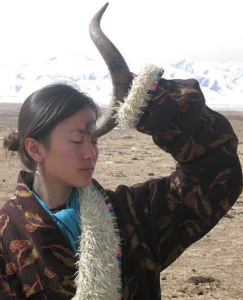 nsight there, but one thing Jetsan speculated about these women was that it could actually be “easier for two women to live together (in the city). People would probably think they had been mistreated by men and therefore given up on them, whereas it would be very difficult for two men to live in a ‘roommate’ situation; ‘shack up together’ as Jetsen called it.”
nsight there, but one thing Jetsan speculated about these women was that it could actually be “easier for two women to live together (in the city). People would probably think they had been mistreated by men and therefore given up on them, whereas it would be very difficult for two men to live in a ‘roommate’ situation; ‘shack up together’ as Jetsen called it.”
A not uncommon arrangement in popular tourist cities is for several male workers (hotel staff, restaurant servers, shop assistants) to share an apartment as friends. (I suppose two men could do the same as two women?) So here was one area where being a woman in a same-sex relationship might actually be easier to manage. Beyond such conjecture Maggie and Katie found little about Tibetan lesbians during their stay in the 2.5 mile-high city.
During my stay in Tibet it was a puzzle and a mystery to appreciate this highly closeted world; “a riddle, wrapped in a mystery, inside an enigma” as the expression goes–the riddle, being born in a communist male-dominated tradition; the mystery, being a woman; the enigma, having lesbian feelings. All of which likely contribute to a nearly insurmountable barrier for a young woman who thinks about being authentic and breaking free of cultural impediments. Insurmountable to be sure. Walking around Lhasa as well as visiting remote villages Katie and Maggie saw many women dressed and behaving traditionally. How many of them harbored a secret? Later they said, “we were very sensitive to the idea of the dire and deep need to be closeted in a society such as Tibet’s.”
Without doubt the majority of lesbian-inclined women today in Tibet override any stirrings of same-gender feelings and allow themselves to be directed into heterosexual marriage–to one or two or more husbands thus virtually aborting any self-understanding of their inner selves. This might sound offensive to a liberated Western person’s ear but when choice is removed from someone’s life passive acceptance takes its place.
Culture, village, marriage, family, religion, communist proscriptions and ignorance about sexual orientation can, to varying degrees, dissolve individual self-expression. These influences become the unchosen choice. That said, Maggie and Katie nevertheless advised me that “we met some amazing people throughout our Tibetan journey who, despite trying to balance those things (strong influences) they were in a powerful, painful and long struggle to carve out their place as their true selves in their society… fighting to express their true selves in both small and big gestures even within their oppressive environments.” In Buddhism those efforts may be considered (loosely) dharma, ‘the way’ or ‘cosmic law and order’, and can be a path of right living, which lifts the issue of sexuality beyond homo or hetero orientation to the realm of ‘pragmatic harmony’.
Much has changed in Tibet in the past 54 years in Tibet. It is a culture that is under constant threat of shrinkage and bleaching by China’s steamroller occupation tactics. What the future holds for Tibetan LGBT people is uncertain and not likely to be liberating. Hope existed in the past when spiritual and social ambivalence toward sexual matters was more acceptable. Apprehension is in the present. Yet, China is opening more to capitalism which appears to bring a measure of tolerance toward gays (think Shanghai)–a paradoxical effect of increased communist control yet with more seeming tolerance to LGBTs–a slightly hopeful future change for queer citizens? In Buddhist Tibet, much is not certain.
—-
Read more about Tibet, Buddhism, Homosexuality and Fake Marriages:
Queer Politics and Tibet:
http://www.tibetanpoliticalreview.org/articles/queerpoliticsandtibet
GlobalGayz News and Reports:
http://www.globalgayz.com/asia/tibet/
A non-gay book about Tibetan life under Chinese rule was published in 2020 titled ‘Eat the Buddha’ written by Barbara Demick. It is a sad tale.

